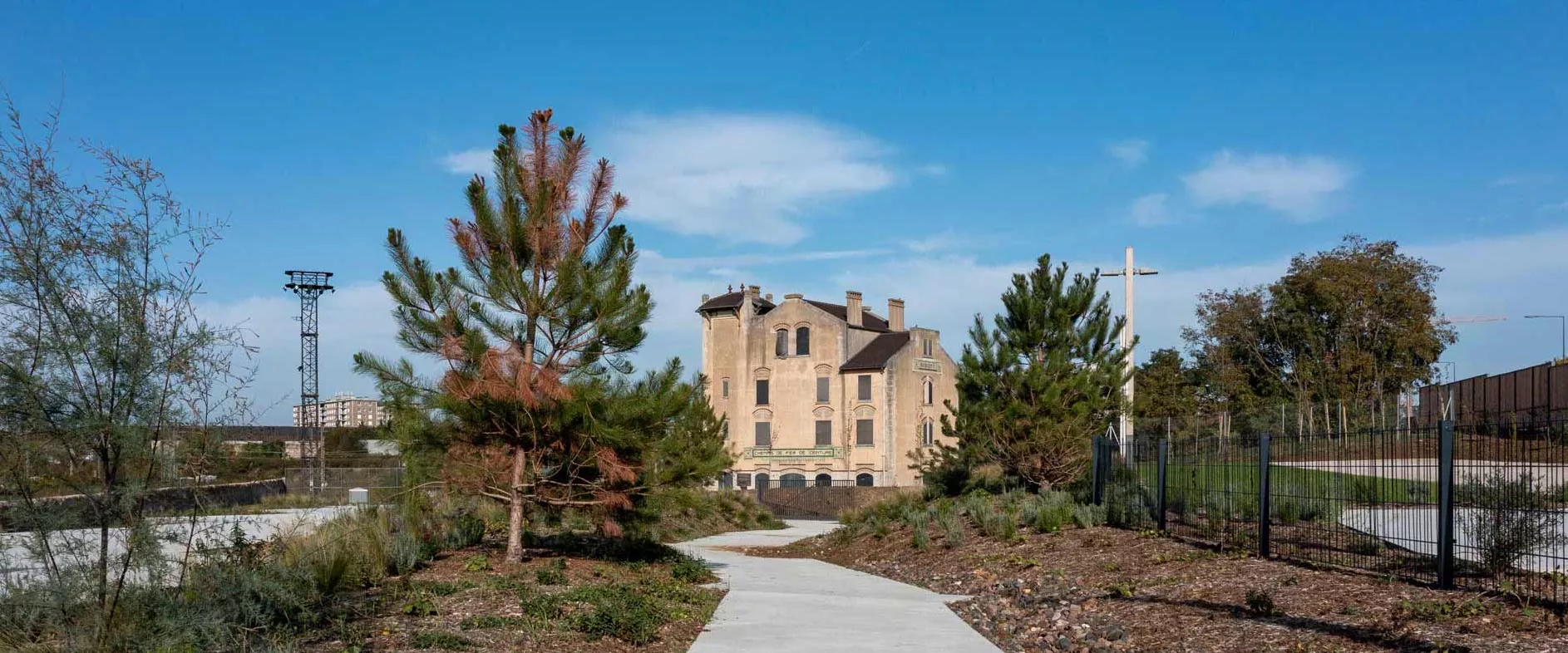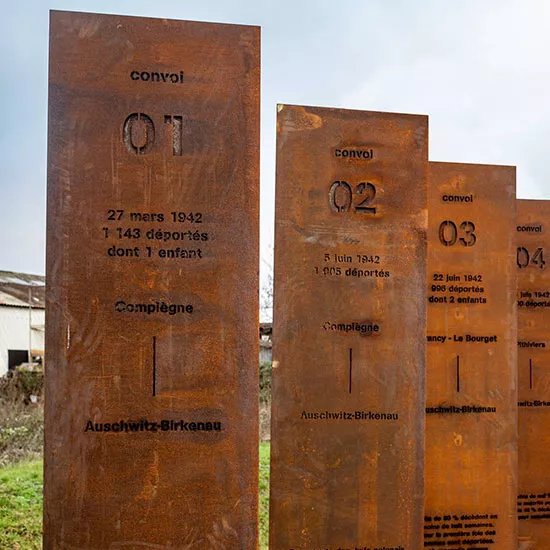
Visit the Bobigny Deportation Memorial
Inaugurated in July 2023, 80 years after the departure of the first convoy carrying deportees to death camps from the railway station at Bobigny, the memorial is a powerful testimony to the Holocaust and World War II.

A remembrance landmark in France
From summer 1943 to summer 1944, the rail station at Bobigny was the main deportation site in France for Jews sent to concentration camps in an operation organized by Nazi Germany and backed by France’s Vichy government. Over a 13-month period, 21 convoys carried 22,453 men, women and children to the death camps.
In transit from Drancy to Auschwitz
Bobigny rail station was built in 1928. Between 1943 and 1944, 22,453 French Jews held at the internment camp at Drancy went through the station as they were deported to the Auschwitz-Birkenau death camp. From the end of World War II through the 1980s, the site was used to store and resell scrap metal. In the late 1990s, SNCF began to study and memorialize its history during the Occupation. As part of this process, Bobigny’s former railway station was recognized as a place of history and remembrance.
Site added to list of France’s historical monuments
Set on a site spanning several hectares, the memorial features personal accounts and depictions of the rail landscape in the 1940s. Visitors walk in the footsteps of deportees, who arrived from the internment camp at Drancy and boarded wagons, most of them bound for Auschwitz-Birkenau. The site also includes an Esplanade de la Mémoire with 75 steel panels representing all 75 deportation convoys that carried Jews from France to the death camps between 1942 and 1944.
What to see at the Bobigny Deportation Memorial
If you’ve visited the Shoah Memorial in Drancy, the Bobigny Deportation Memorial is a powerful complement. At Bobigny, you’ll find:
- key facts about the Holocaust
- information on the history of the railway station—its creation before the war, its use in the deportation, its post-war role as an industrial site, and its transformation into a memorial.
- a depiction of the station as it was in 1943-1944
- Holocaust mapping at local, national and European level
- personal accounts of deportees
Then and now—a history of the site
Share the article